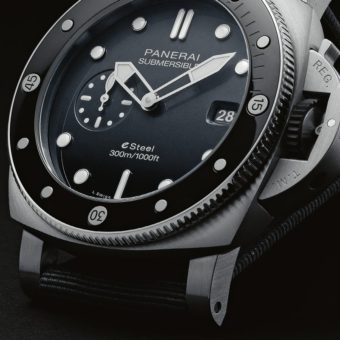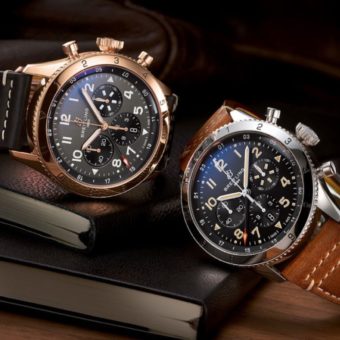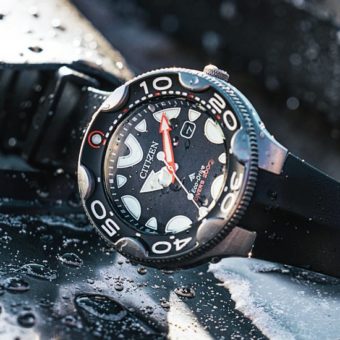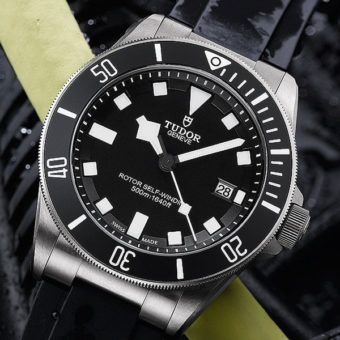With its Hydrium collection, Isotope has achieved something that it can be particularly proud of – especially as a small brand – it has created a new flavor of diving watches. With its robust yet compact case, prominent bezel, cleverly tucked-in crown, short lugs, and smooth case sides, the Hydrium differs from all those other diving watches.
As this is still one of the most crowded categories in the industry, that is quite an accomplishment. The clever design allowed the brand to build a collection that offers the Hydrium in a surprising array of flavors, from a collaboration with NASA to a fun homage to the Exit sign in buildings. With the new Hydrium California, it explores yet another side of its universe and dives into history.
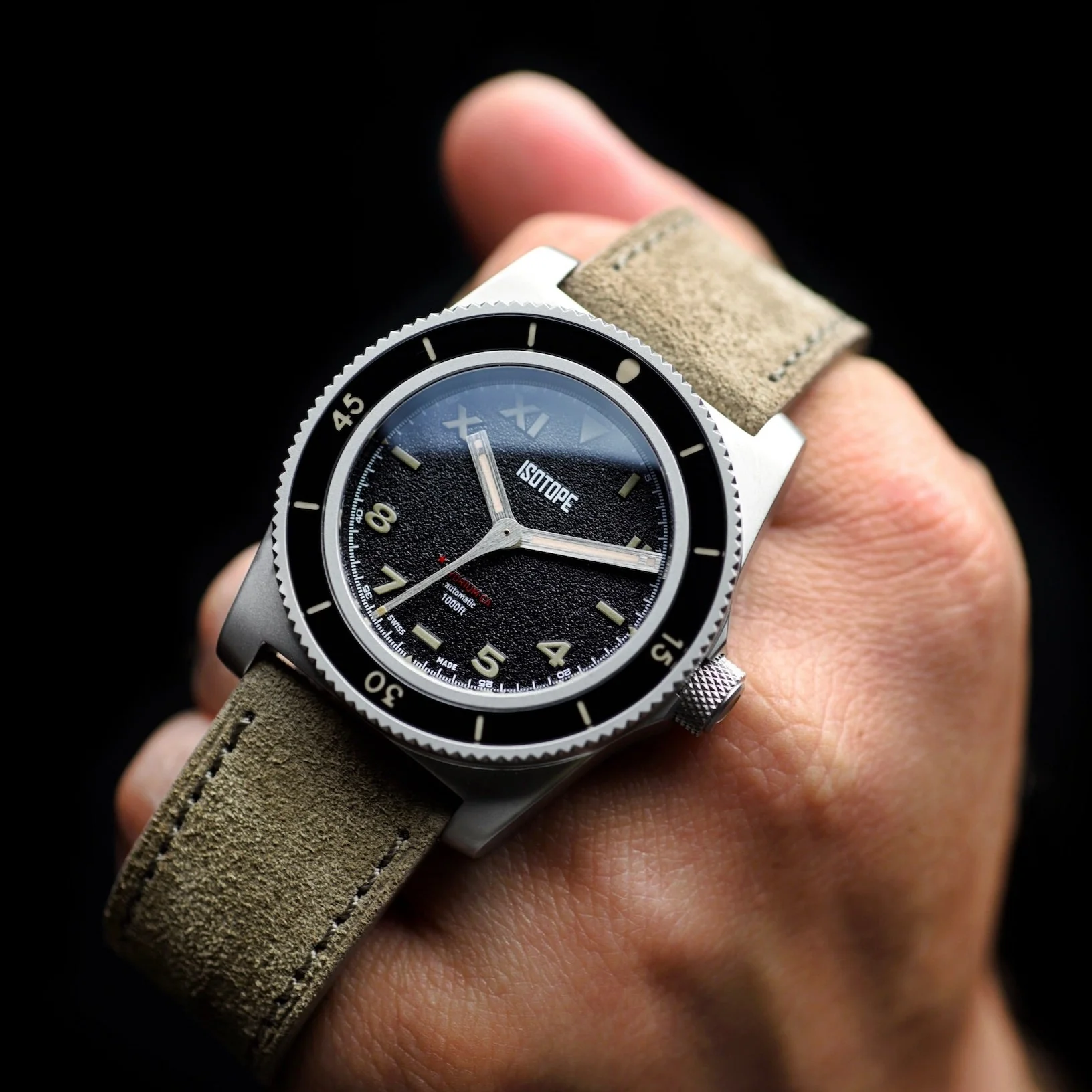
This watch is an ode to the so-called California dial, which combines Arabic with Roman numerals. Initially, this type of dial was called a ‘no-error’ dial, as it made it easier for divers to read the correct time under harsh conditions, as numerals couldn’t be swapped. Rolex patented this design on July 15, 1942, but it also became a hallmark feature on some of Panerai’s early models. These timepieces were tool watches in their purest form, and few were made. When the renaissance of mechanical watchmaking took off in the 1980s, watches with these rare dials were in great demand, leaving some shady dealers to have dials redone to meet demand. Apparently, the best in the business for doing this work was located in California. As experts tried to identify these fake dials, they soon started referring to them as ‘California’ dials, which stuck and became the name for dials combining Roman and Arabic numerals.

Jose Miranda is a founder and current CEO of Isotope, as well as an avid watch enthusiast. He has been craving to add an original ‘California ‘-dial watch to his personal collection, yet he lacked the funds to purchase one. Now, he fulfills this desire with his own brand, and the result is pleasing to say the least.

The base is still the same as previous editions, a 40mm large case made from sand-blasted 316L stainless steel, but a few twists make if profoundly different from previous Hydrium models. This starts, of course, with the dial. Its grainy texture gives a vintage vibe, and Miranda avoided the temptation of making the numerals too large. Instead, they are very balanced with the other elements on the dial, including the hands. These deserve extra credit, not only for their beautiful brushed finish that shows a lot of play of light but also because they are all precisely the correct length for once. I do hope other brands take notes on this work.
The Isotope name is printed in bold white letters on the dial, further enhancing the feel that you are wearing a nice tool watch. The Hydrium name is printed in red, with CA., and a red star next to it, as a homage to the State of California. Even the bezel insert is redesigned, now with a more vintage layout that glows up in the dark.
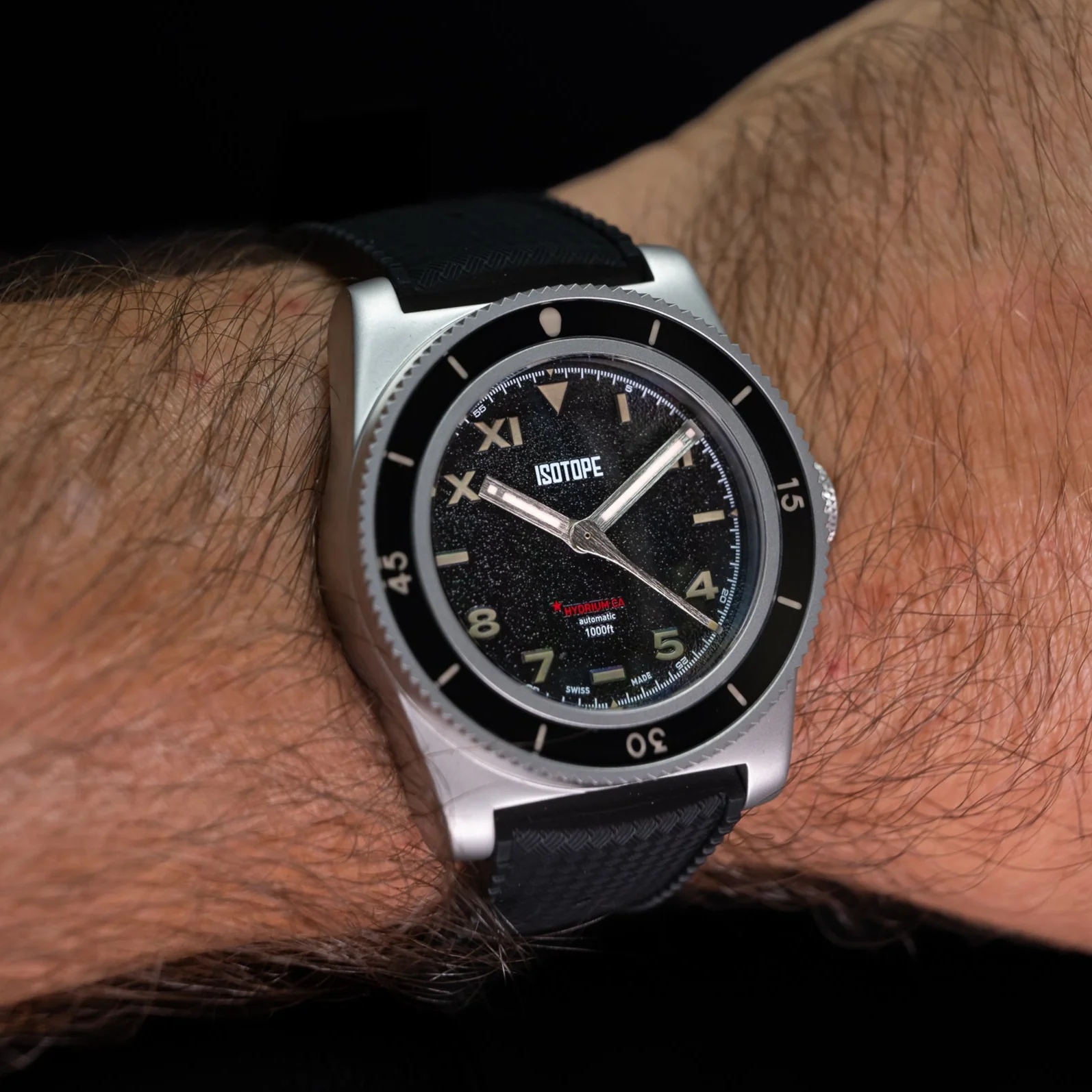
For the rest of the watch, this Hydrium stays its pleasing self, with its Landeron automatic movement that can be admired through the display back. It runs at 28,800 VpH and offers a 40-hour power reserve. The finishing of the movement is solid, and given the price point of the Hydrium California, perhaps even surprising, featuring blued screws, perlage, and Côtes de Genève.
A quick-release FKM strap endorses the vintage vibe of this watch, while the well-made buckle enhances its wearing comfort. Isotope can also deliver the Hydrium California with a suede strap in tan, which is not water-resistant but looks very good. I must say that I also think that a brown alligator leather strap would look amazing on this Isotope.
As always for Isotope, this version of the Hydrium a limited edition. Only 200 pieces will be made, with the price marked $1,146
For more information, visit Isotope, here

